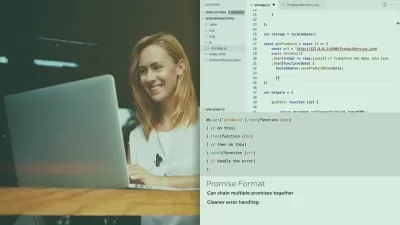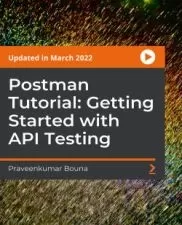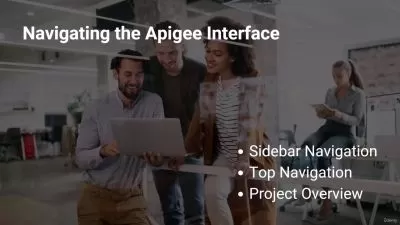OpenAPI Specification & Swagger Tools - Zero To Master
Eazy Bytes,Madan Reddy
8:21:38
Description
Document, Mock, Test APIs using Open API specification & Swagger Tools. Generate code from Open API. Based on OAS 3 ver
What You'll Learn?
- Designing APIs with OpenAPI Specifications and Swagger Tools
- Describing APIs details using OpenAPI Specifications
- History of OpenAPI & Swagger. Relation between them
- Details about Swagger tools like Swagger Editor, Swagger UI, Swagger Inspector, Swagger Hub etc.
- How to get started with OpenAPI in code first & Design first scenarios
- How to write a valid OpenAPI yaml document
- Writing re-usable content inside OpenAPI with components
- Data types supported by OpenAPI & their details
- Inheritance & polymorphism inside OpenAPI
- How to describe APIs security inside OpenAPI
- How to mock APIs with OpenAPI specification
- How to generate client code & server stubs using OpenAPI
- Deploying & Hosting OpenAPI along with Swagger UI
Who is this for?
What You Need to Know?
More details
Description'OpenAPI Specification & Swagger Tools - Zero To Master' course will help in understanding about Open API Specification and how to describe, document APIs using it. By the end of this course, students will understand all the below topics,
1) Designing APIs with OpenAPI Specifications and Swagger Tools
2) Describing, Documenting APIs details using OpenAPI Specifications
3) History of OpenAPI & Swagger and relation between them
4) Details about Swagger tools like Swagger Editor, Swagger UI, Swagger Inspector, Swagger Hub, Swagger Codegen etc.
5) How to get started with OpenAPI in code first & Design first scenarios
6) How to write a valid OpenAPI document using YAML syntax
7) Writing re-usable content inside Open API specification with components
8) Data types supported by Open API specification & their details
9) Inheritance & polymorphism inside OpenAPI with keywords oneOf, anyOf, allOf and not
10 ) How to describe APIs security inside Open API specification
11) How to mock APIs with Open API specification & Prism mock server
12) How to generate client code & server stubs using OpenAPI for various popular programming languages & frameworks
13) Deploying & Hosting Open API specification inside a GitHub page along with Swagger UI
14) Providing examples data for the APIs inside Open API specification
15) Advantages of using Open API specification
16) Providing better documentation using CommonMark syntax inside Open API specification
Who this course is for:
- API Developers, Testers, Business Analysts, Architects, DevOps team members
'OpenAPI Specification & Swagger Tools - Zero To Master' course will help in understanding about Open API Specification and how to describe, document APIs using it. By the end of this course, students will understand all the below topics,
1) Designing APIs with OpenAPI Specifications and Swagger Tools
2) Describing, Documenting APIs details using OpenAPI Specifications
3) History of OpenAPI & Swagger and relation between them
4) Details about Swagger tools like Swagger Editor, Swagger UI, Swagger Inspector, Swagger Hub, Swagger Codegen etc.
5) How to get started with OpenAPI in code first & Design first scenarios
6) How to write a valid OpenAPI document using YAML syntax
7) Writing re-usable content inside Open API specification with components
8) Data types supported by Open API specification & their details
9) Inheritance & polymorphism inside OpenAPI with keywords oneOf, anyOf, allOf and not
10 ) How to describe APIs security inside Open API specification
11) How to mock APIs with Open API specification & Prism mock server
12) How to generate client code & server stubs using OpenAPI for various popular programming languages & frameworks
13) Deploying & Hosting Open API specification inside a GitHub page along with Swagger UI
14) Providing examples data for the APIs inside Open API specification
15) Advantages of using Open API specification
16) Providing better documentation using CommonMark syntax inside Open API specification
Who this course is for:
- API Developers, Testers, Business Analysts, Architects, DevOps team members
User Reviews
Rating
Eazy Bytes
Instructor's CoursesMadan Reddy
Instructor's Courses
Udemy
View courses Udemy- language english
- Training sessions 75
- duration 8:21:38
- English subtitles has
- Release Date 2024/05/03
















